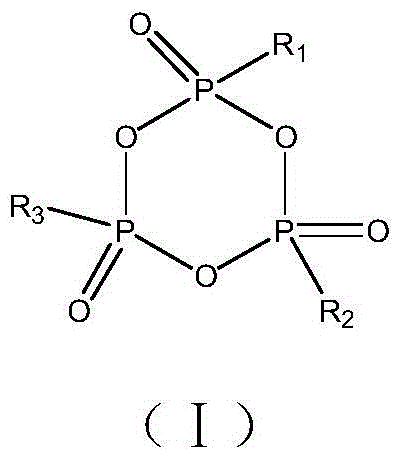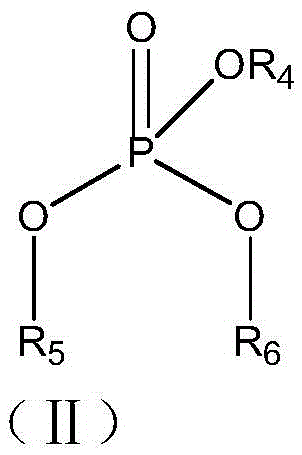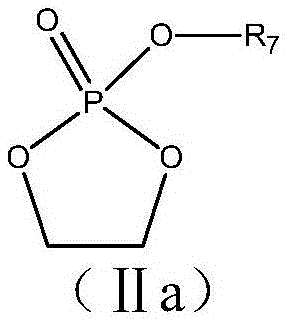Nonaqueous electrolyte and lithium ion battery using same
A non-aqueous electrolyte and non-aqueous technology, which is applied in the field of lithium-ion batteries, can solve the problems of loose solid electrolyte membrane, instability, and high reduction potential, and achieve the effects of inhibiting reduction decomposition, improving cycle performance, and improving safety performance
- Summary
- Abstract
- Description
- Claims
- Application Information
AI Technical Summary
Problems solved by technology
Method used
Image
Examples
Embodiment 1~9
[0084] The preparation of embodiment 1~9 electrolyte
[0085] Embodiment 1~9 electrolyte is prepared according to the following method:
[0086] In the drying room, after mixing EC, PC and DEC, add lithium salt, then add phosphonic acid cyclic anhydride compound and phosphoric acid ester compound, mix well, and obtain electrolyte solution, wherein, the addition amount of EC, PC and DEC is such that EC , PC and DEC weight ratio are EC:PC:DEC=1:1:3, the addition amount of lithium salt is to make LiPF 6 The molar concentration in the electrolyte is 1mol / L.
[0087] Preparation of lithium-ion batteries:
[0088] 1) Preparation of the positive electrode sheet: the positive electrode active material lithium cobaltate (molecular formula is LiCoO 2 ), the conductive agent acetylene black, and the binder polyvinylidene fluoride (abbreviated as PVDF) are fully stirred and mixed in an appropriate amount of N-methylpyrrolidone (abbreviated as NMP) solvent in a weight ratio of 96:2:2 to...
PUM
 Login to View More
Login to View More Abstract
Description
Claims
Application Information
 Login to View More
Login to View More - R&D
- Intellectual Property
- Life Sciences
- Materials
- Tech Scout
- Unparalleled Data Quality
- Higher Quality Content
- 60% Fewer Hallucinations
Browse by: Latest US Patents, China's latest patents, Technical Efficacy Thesaurus, Application Domain, Technology Topic, Popular Technical Reports.
© 2025 PatSnap. All rights reserved.Legal|Privacy policy|Modern Slavery Act Transparency Statement|Sitemap|About US| Contact US: help@patsnap.com



